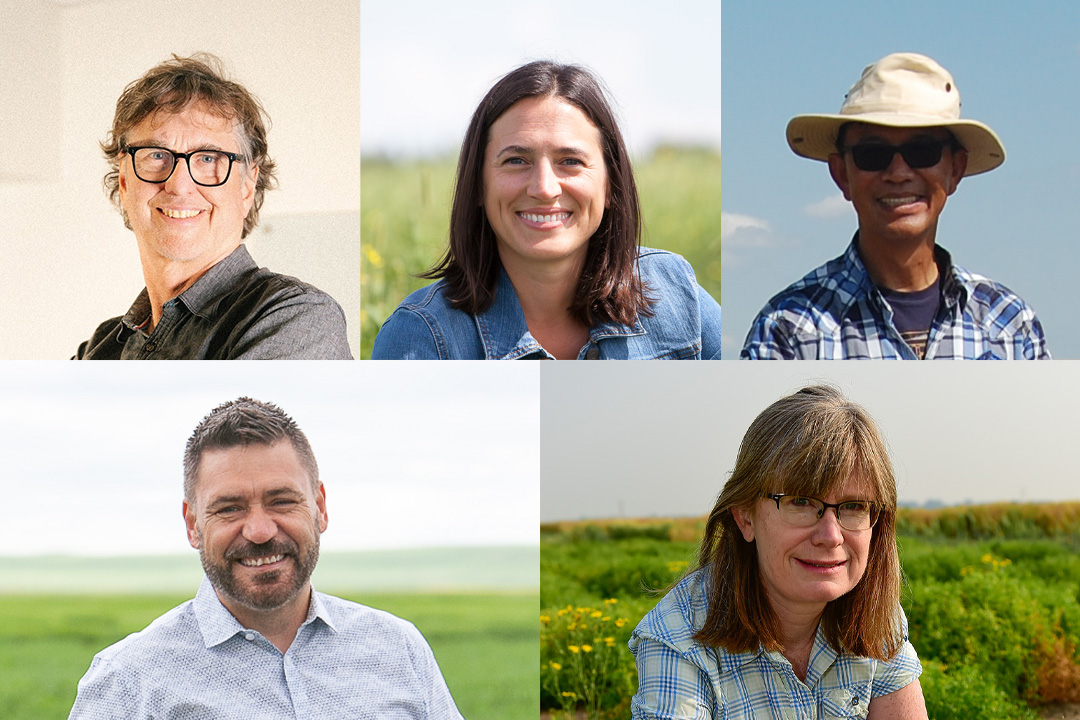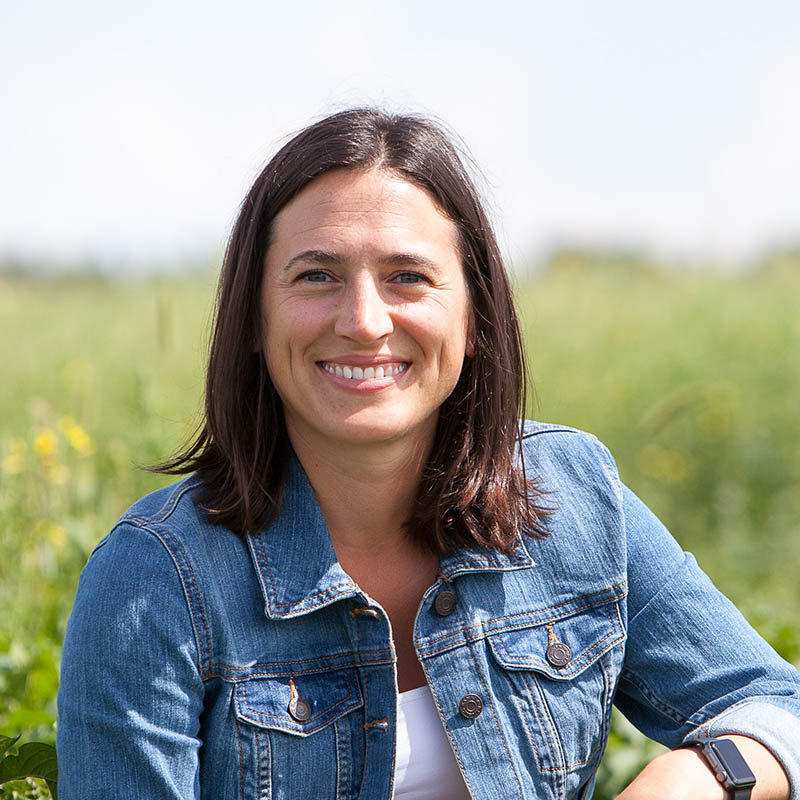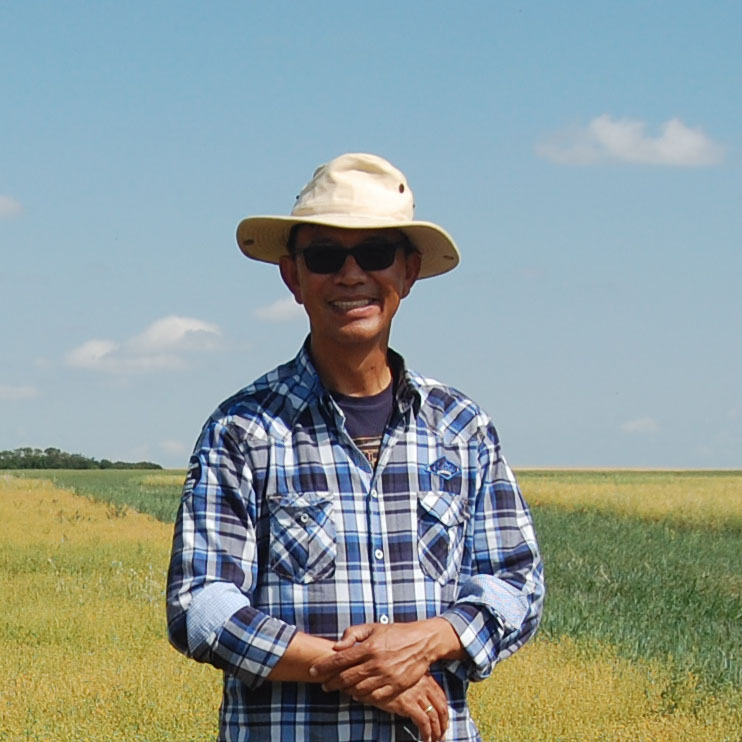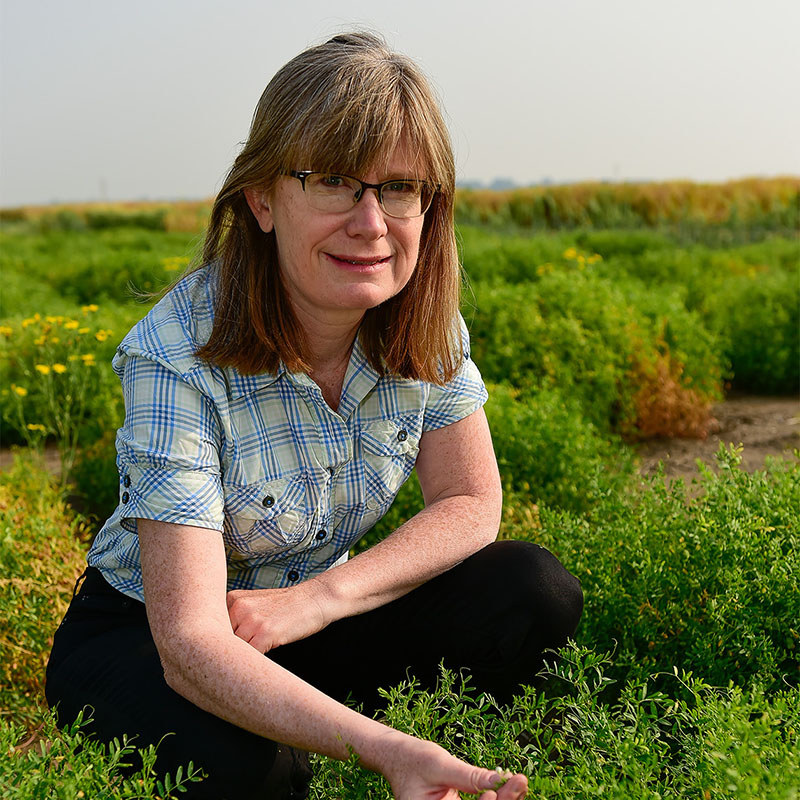
More than $10 million awarded to USask crop research projects
Twenty-nine crop science projects from researchers at the University of Saskatchewan (USask) have received a total of close to $7.5 million from the Governments of Canada and Saskatchewan and more than $2.5 million in co-funding from industry partners.
By Matt Olson, Research Profile and ImpactThe USask crop research projects received support from Saskatchewan’s Agriculture Development Fund (ADF), meant to aid the growth and advancement of the agricultural industry in the province through innovative work solving modern questions in agricultural science.
The ADF is supported through the Sustainable Canadian Agriculture Partnership (CAP), an investment of $3.5 billion over five years from federal, provincial and territorial governments with the goal of supporting the agri-food and agri-product sectors across Canada. The Sustainable CAP includes $1 billion in federal programs and activities and a $2.5 billion commitment for programs designed by provinces and territories that is cost-shared 60 per cent by the federal government and 40 per cent by provincial/territorial governments.
Twenty-nine USask-led projects received nearly $7.5 million from the ADF. Of those 29 projects, 12 received a total of more than $2.5 million from key agricultural industry and research partners including Alberta Grains, the Manitoba Crop Alliance, the Saskatchewan Barley Development Commission, the Saskatchewan Canola Development Commission, the Saskatchewan Flax Development Commission, the Saskatchewan Forage Seed Development Commission, Saskatchewan Pulse Growers, and the Western Grains Research Foundation.
Research funded by the ADF ranges in scope from genomic analysis of crop species, to the reduction of greenhouse gas emissions through crop rotation, to methods for improving crop yields through changing climate conditions.
“USask has a long-standing tradition of excellence in agriculture research. This significant funding is reinforcement of our leadership in this field,” said USask Vice-President Research Baljit Singh. “We appreciate the support from the the provincial and federal government and our industry partners. Using state-of-the-art technologies and innovative methods, USask researchers will continue to sustainably feed a hungry world.”
Using drones and spectral imaging to predict best crops

Dr. Steve Shirtliffe (PhD), a professor in USask’s College of Agriculture and Bioresources, received $315,353 from the ADF for his work using digital tools to identify the ideal traits in early generation wheat plants to help breeders accelerate their breeding and growing process.
He is collaborating with Dr. Adam Carter (PhD) of the Crop Development Centre (CDC). The project is co-funded by Alberta Grains, the Manitoba Crop Alliance, the Saskatchewan Wheat Development Commission, and the Western Grains Research Foundation.
By utilizing drones armed with multi-spectral imaging cameras, Shirtliffe and his collaborators hope to identify the best phenotypes – representative physical characteristics – which signify superior genotypes of wheat for breeders to target.
Researchers can use digital imaging to more accurately estimate the harvest index, which is the ratio of seed to crop biomass. By targeting this in early-generation plants, breeders will be able to select the best-yielding crop varieties to breed superior strains of wheat.
“One of things we’re trying to quantify using digital imagery is some estimate of crop yield and harvest index at very early generations of wheat, before it even goes into small plots,” Shirtliffe said. “We’re going to explore methodologies to estimate the yield.”
The research team will test various phenotyping techniques to identify the best tools for predicting future crop yields and how they relate to different phenotypes.
Shirtliffe said he was grateful and excited to receive support from the ADF and numerous other industry partners to push this project forward. Crop phenotyping, he said, didn’t really exist as a discipline as recently as a few years ago, so to receive the funding to continue developing these new techniques is an exciting prospect.
“It keeps the University of Saskatchewan at the cutting edge of digital agriculture, and we have such strength in the CDC in crop breeding, it’s such a symbiosis,” he said. “The good thing is we’ve spent the last seven years figuring out how to do this work.”
Shirtliffe also received funding from the Western Grains Research Foundation for a separate project using satellite imaging to map spatial variation in crop yields across fields in Western Canada.
Analyzing and reducing crop greenhouse gas emissions

As considerations of greenhouse gas emissions (GHGs) grow in all industries, including agriculture, Dr. Kate Congreves (PhD) is developing new techniques for growers to reduce their emissions.
Congreves, an associate professor in the Department of Plant Sciences in the College of Agriculture and Bioresources, received $421,246 from the ADF to research how different crop rotations affect GHGs released by soils. The project was co-funded by the Saskatchewan Pulse Growers.
By using micrometeorological techniques on a 12-hectare field, Congreves and her team can measure the GHG dynamics consistently over prolonged periods of time.
“Soils are by far the main anthropogenic source of nitrous oxide. We can get measurements of nitrous oxide released from soils year-round,” she said. “We can also get measurements of carbon dioxide, which captures both soil respiration as well as plant sequestration. So, we can see the whole picture.”
Congreves said the goal is to build a better understanding of soil ecosystem services in relation to different crop rotations. Pulse crops help to fix nitrogen into the soil and can reduce the reliance on nitrogen-based fertilizer in the long term, when considering the full rotation.
By introducing a nitrogen-fixing pulse crop such as peas into a wheat-canola rotation, Congreves believes less nitrogen (as nitrous oxide) will be released into the atmosphere.
The USask micrometeorological site is one of only a few in Canada and was established in Saskatoon with the assistance of University of Guelph researchers in 2018, as well as colleagues in the Department of Soil Science at USask. Congreves said the support received not only provides her project the funding to continue innovative agricultural research, but also furthers opportunities for USask to train future researchers on these advanced technologies.
“This funding provides an amazing platform for training students,” she said. “It’s a really rich resource for training the next generation to be able to not only understand GHG dynamics, but to be competent in measurement, using the technology, synthesizing the data, and in interpreting what the data means.”
Creating efficient, climate-resilient and high-yield chickpea and flax strains

USask’s Dr. Bunyamin Tar’an (PhD), a professor with the College of Agriculture and Bioresources and a plant breeder with the CDC, received more than $800,000 from the ADF for projects looking to create superior strains of two crucial crops.
Tar’an received $489,613 for a project to use genetics to create a hardier type of chickpea that will still produce strong yields with fewer resources contributed – a “more efficient” strain. He also received $317,371 to develop more genetic variability in flax strains that will resist changes in weather and climate. The flax project is co-funded by the Manitoba Crop Alliance, the Saskatchewan Flax Development Commission, and the Western Grains Research Foundation.
“What we want is to make the new varieties in the future have increased nutrient use efficiency – nutrient meaning the nutrition that plants need from the soil and the environment – how we can breed new lines in the future that can afford a minimum input for the plant yet still deliver the yield we are expecting to have,” Tar’an said.
Tar’an said crop breeders wouldn’t have the same concerns around genetically selecting for hardier, high temperature-resistant crop strains as recently as 10 or 15 years ago. But with some of the extreme weather conditions of the past few years, that has now become a necessity for producers.
“As we go through this kind of a year, you see erratic climate conditions, dry climate conditions ... we noted plants need the ability to withstand more erratic conditions,” he said. “We need to add into the mainstream breeding program these additional factors.”
As Tar’an puts it, USask and the CDC are “unique” in that research can be carried through from the laboratory stage with plant breeders directly into the applied research of creating viable strains for growers.
Tar’an leads both the flax and the chickpea breeding programs at the CDC, and there are many opportunities to share results and for research opportunities with students.
“That’s what I’m really enjoying here – we do the research, we deliver to the farmers, and we do the training of future scientists, future breeders,” he said.
Breeding mutually supportive wheat and lentils

While it is a commonly accepted practice to rotate crops in a field, Dr. Kirstin Bett (PhD) with USask’s College of Agriculture and Bioresources believes more can be done at the crop breeding level to give scientists and growers an advantage.
Bett is working with Dr. Curtis Pozniak (PhD), a professor in the College of Agriculture and Bioresources and director of the CDC, and with Congreves on a project which will examine the advantages of breeding lentils and wheat with the targeted purpose of assisting each other in a crop rotation. The project received $625,000 in funding from the ADF.
“We want to develop lentils that will work well in rotation, and wheats that will respond well to lentils in rotation, while at the same time still breeding for high yield in both,” she said. “So, a farmer would be able to plant a high-yielding lentil that will also leave behind something good ... to make them feel like they’ve made the most of growing the crop in rotation.”
Unlike other crops, pulse crops like lentils have the ability to fix nitrogen, and Bett said some of that nitrogen can be left behind for the subsequent cereal crops – which could lead to less synthetic nitrogen use and more environmentally conscious growing.

Bett said there is evidence that different varieties of lentils grown in a crop rotation will affect the yields of the rotated-in wheat crop. The goal of this ADF-funded research is to interconnect the lentil-breeding and wheat-breeding program at USask to identify at the genomic level how to best select and breed lentil and wheat plants that will more directly support each other.
A second target is to develop wheat crops that more efficiently utilize the nitrogen applied or left behind.
“An exciting objective of our work is to characterize a novel DNA segment in wheat that has been shown to reduce nitrogen losses from wheat production. The funding provided by ADF will support our collaborative efforts to maximize producer profitability,” Pozniak said.
This ADF-funded project is an additional facet of a larger project funded by Genome Canada’s Climate-Smart Agriculture and Food Systems initiative spearheaded by Bett and Pozniak. With the support of the ADF, matching funds for the Genome Canada project are also coming from the Western Grains Research Foundation, the Saskatchewan Pulse Growers, the Saskatchewan Wheat Development Commission, the Manitoba Crop Alliance, and Results Driven Agriculture Research (RDAR).
The full list of USask’s January 2024 ADF funding recipients in crop research:
- Dr. Bishnu Acharya (PhD), College of Engineering - Valorization of oat hulls for materials, chemicals and functional food ingredients - $292,500
- Dr. Sabine Banniza (PhD), College of Agriculture and Bioresources - Development of a rapid screening technique for Aphanomyces root rot in pea and lentil - $65,733 - Co-funded by the Saskatchewan Pulse Growers and the Western Grains Research Foundation
- Banniza - Development of advanced lentil lines with partially resistance against race 0 of Colletotrichum lentis causing anthracnose - $316,494 - Co-funded by the Saskatchewan Pulse Growers
- Dr. Kirstin Bett (PhD), College of Agriculture and Bioresources - Crop rotation: Using selection targets to improve lentil and wheat performance in a changing climate - $625,000
- Dr. Rosalind Bueckert (PhD), College of Agriculture and Bioresources - Temperature, soybean protein and seed filling - $20,125
- Bueckert - Soybean leaf area and leaf nitrogen - $165,485
- Bueckert - Building a better nitrogen pantry in pea - $195,385
- Dr. Kate Congreves (PhD), College of Agriculture and Bioresources - Crops with benefits: using rotations to reduce greenhouse gas emissions - $421,246 - Co-funded by the Saskatchewan Pulse Growers
- Dr. Ajay Dalai (PhD), College of Engineering - Production of fuel pellets from agricultural residues as bio-coal for conversion to biofuels using gasification and combustion - $385,000
- Dr. Supratim Ghosh (PhD), College of Agriculture and Bioresources - Improving food application of prairie crop-based oleosomes by modifying their structure and functionality - $235,000
- Dr. Randy Kutcher (PhD), College of Agriculture and Bioresources - Assessing seed to seedling transmission of Xanthomonas translucens causing BLS of cereals to establish inoculum thresholds - $179,457 - Co-funded by Alberta Grains, the Manitoba Crop Alliance, the Saskatchewan Barley Development Commission, the Saskatchewan Wheat Development Commission, and the Western Grains Research Foundation
- Dr. Patrick Lloyd-Smith (PhD), College of Agriculture and Bioresources - Developing irrigation economic models to improve producer outcomes and sustainable agricultural water management in Saskatchewan - $200,000
- Dr. Venkatesh Meda (PhD), College of Engineering - Sustainable agricultural waste management through the development of fire-resistant ducts using natural fibers - $150,000
- Dr. Rex Newkirk (PhD), College of Agriculture and Bioresources - Total utilization of canola by-products after oil extraction - $225,000
- Dr. Michael Nickerson (PhD), College of Agriculture and Bioresources - Development of a commercial wet fractionation process for producing novel oat protein ingredients - $244,000
- Nickerson - Development of faba bean and oat-based texturized vegetable proteins as meat analogues - $210,000
- Dr. Curtis Pozniak (PhD), College of Agriculture and Bioresources - Improving accessibility of FHB resistance in wheat - $242,501 - Co-funded by the Manitoba Crop Alliance, the Saskatchewan Wheat Development Commission, and the Western Grains Research Foundation
- Pozniak (PhD) - Genomic assisted breeding for heat and drought tolerance in wheat - $355,000 - Co-funded by the Manitoba Crop Alliance, the Saskatchewan Wheat Development Commission, and the Western Grains Research Foundation
- Dr. Randall Purves (PhD), College of Pharmacy and Nutrition - Exploring biochemical diversity in faba beans and their seed coats for added value potential - $209,000
- Dr. Martin Reaney (PhD), College of Agriculture and Bioresources - Total utilization of oilseed hull: Canola, flaxseed, and borage - $360,000
- Dr. Jeff Schoenau (PhD), College of Agriculture and Bioresources - Land application of spent filtration earth from canola oil production to improve soil properties - $118,200 - Co-funded by the Saskatchewan Canola Development Commission
- Schoenau - Effect of calcium containing soil amendments on soil conditions, plant growth and greenhouse gas emissions - $55,500 - Co-funded by the Saskatchewan Forage Seed Development Commission and the Western Grains Research Foundation
- Dr. Steve Shirtliffe (PhD), College of Agriculture and Bioresources – Digital phenotyping to accelerate wheat breeding - $315,353 - Co-funded by the Alberta Grains, the Manitoba Crop Alliance, the Saskatchewan Wheat Development Commission, and the Western Grains Research Foundation
- Dr. Bunyamin Tar’an (PhD), College of Agriculture and Bioresources - Improvement of phosphorus use efficiency and abiotic stress tolerance in chickpea - $489,613
Tar’an (PhD) - Enhancing genetic gain for yield, biotic and abiotic stress tolerance in flax - $317,371 - Co-funded by the Manitoba Crop Alliance, the Saskatchewan Flax Development Commission, and the Western Grains Research Foundation - Dr. Tom Warkentin (PhD), College of Agriculture and Bioresources - PeaTILL – A TILLING population for improvement of yield, seed protein concentration and resistance to root rots in pea - $294,113 - Co-funded by the Saskatchewan Pulse Growers
- James Wasserman, Canadian Centre for Rural and Agricultural Health – Implementing a low-cost ROPS program to reduce Saskatchewan farm fatalities - $50,800
- Dr. Christian Willenborg (PhD), College of Agriculture and Bioresources - Improving weed management for Saskatchewan growers - $492,683
- Dr. Lifeng Zhang (PhD), College of Engineering - Develop a green, non-thermal and sustainable process for improving functionalities of pulse proteins - $217,500 - Co-funded by the Saskatchewan Pulse Growers
-30-
For more information, contact:
Daniel Hallen
USask Media Relations
daniel.hallen@usask.ca
306-966-6922
Together, we will undertake the research the world needs. We invite you to join by supporting critical research at USask.

